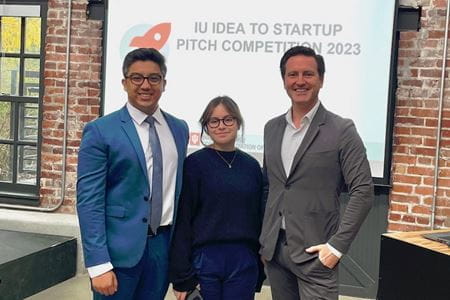Third-year medical students Brooke Stephanian and Sabin Karki came to the Indiana University School of Medicine with one medical device startup already in their portfolio. Now the grade school pals from Terre Haute, Indiana, have secured a grant from NASA to work on their next big invention.
“As advocates for innovation, we’re actively collaborating with IU Innovates to expand entrepreneurship programming for medical students and all graduate students, so more students can bring bold ideas to bedside,” said Stephanian, who earned a bachelor’s in biomedical engineering from Johns Hopkins University and a Master of Engineering in translational medicine from UC Berkley and UC San Francisco before coming to IU.
Karki also studied biomedical engineering at Johns Hopkins and earned a master’s in cellular and integrative physiology at the IU School of Medicine before starting medical school.
His collaboration with Stephanian dates back to middle school, when they met at what he called a “community of nerds” that gathered on weekends for Science Bowl practices. At Hopkins, Karki was inspired toward entrepreneurship when he worked with National Medal of Technology and Innovation winner and microphone technology inventor James E. West, who was then developing a “smart stethoscope” that could record breathing while filtering out other noises. Stephanian began her foray into entrepreneurship by developing a startup incubator at Hopkins.
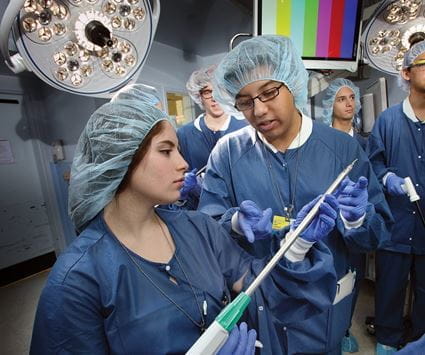 Today, Stephanian and Karki hold two medical device patents. The first, Benegraft, is a surgical instrument used in cartilage grafting developed with a student team they co-led at Johns Hopkins. The technology was acquired by an international firm and is now used in operating rooms throughout the U.S. and in several other countries.
Today, Stephanian and Karki hold two medical device patents. The first, Benegraft, is a surgical instrument used in cartilage grafting developed with a student team they co-led at Johns Hopkins. The technology was acquired by an international firm and is now used in operating rooms throughout the U.S. and in several other countries.
Karki and Stephanian are hoping to have similar success with a corneal sensory testing device they developed with Gregory Borschel, MD, patented by Indiana University in 2024.
“They are so creative, resourceful, innovative and team oriented,” said Borschel, the James Joseph Harbaugh, Jr. Professor of Plastic Surgery and a professor of ophthalmology at the IU School of Medicine. “That collaborative approach is super important. This project has education, research, clinical and commercial dimensions to it.”
The team’s SensiPen device won monetary awards at two pitch competitions hosted by the IU Innovation and Commercialization Office (ICO), which works with IU inventors and industry partners to bring university innovations to market. Additionally, IU recently announced the IU Launch Accelerator for Biosciences, or IU LAB, a first-of-its-kind, academic-industry initiative supported by a $138 million grant from Lilly Endowment Inc., funding construction of a business incubator at the 16 Tech Innovation District in Indianapolis.
“Close industry partnerships or academic institutions that have the capabilities and facilities to bridge certain gaps — referred to as ‘valleys of death’ — will ultimately be much more successful than those that do not,” said Erik Robinson, manager of technology development, therapeutics and devices at ICO. “This is definitely a massive step in the right direction to be able to shorten the timeline for innovative and disruptive technologies to get to market.”
Overcoming ‘valleys of death’
After its initial momentum, SensiPen faced its own “valley of death” with a funding gap, said Borschel, who self-funded the initial protype. The team needs about $100,000 to take their device to the next level of product development.
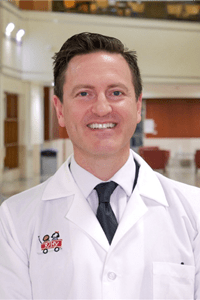 “I could see this being a really successful, viable medical device that could be used clinically — my colleagues around the country want it,” he said. “It might not be a huge revenue generator, but it fills a needed gap and could be used globally. One in 2,000 people worldwide have the condition this device could be used to diagnose. We need to keep pushing.”
“I could see this being a really successful, viable medical device that could be used clinically — my colleagues around the country want it,” he said. “It might not be a huge revenue generator, but it fills a needed gap and could be used globally. One in 2,000 people worldwide have the condition this device could be used to diagnose. We need to keep pushing.”
Stephanian and Karki know the commercialization process takes persistence. They’re accustomed to setbacks.
“It takes a lot of failures to get to those successes,” Stephanian said. “You develop a lot of grit.”
She and Karki were coming fresh off one of those “failures” as she spoke.
“Just this morning, an idea we had been exploring for a year was shot down by a leader in health informatics who said it didn’t offer enough value to stakeholders,” said Karki. “That’s discouraging, but you’ve got to look at a ‘no’ as more of a redirection.”
With SensiPen, they’ve found a creative avenue for funding — a $12,000 fellowship award from NASA’s Space Grant program.
“I was reading papers and saw that eye health is a big issue for astronauts in space,” said Stephanian, who is a licensed pilot and worked at NASA Ames Research Center in Mountain View, California, before starting medical school. “Ideas come through reading research papers and just going for it. I had no idea this would actually get accepted and get funded.”
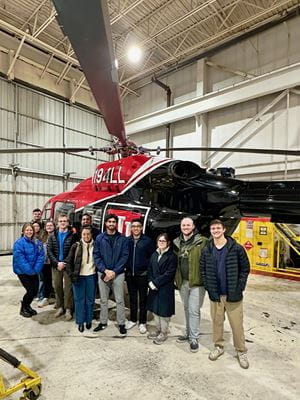 At IU School of Medicine, Stephanian and Karki have launched the Aerospace Medicine Student Interest Group, and they started up Indiana’s first chapter of the Aerospace Medicine Student and Resident Organization.
At IU School of Medicine, Stephanian and Karki have launched the Aerospace Medicine Student Interest Group, and they started up Indiana’s first chapter of the Aerospace Medicine Student and Resident Organization.
They also collaborate with their medical school peers to advocate for policy improvements through the Indiana State Medical Association. In 2023, they co-authored a resolution that supports rural ambulance services in Indiana and protects patients from surprise billing, strengthening emergency medical care statewide. Other initiatives deal with health monitoring technologies and advocate for access and tax-emption for essential family care products.
“My research and clinical interests lie at the intersection of technology and medicine, with a strong focus on how these tools can be used to address health disparities and improve outcomes for patients,” Stephanian said.
When ‘magic’ happens
While the rigors of medical school alone are intense, Karki and Stephanian say it’s the perfect environment to ask questions about the medical community’s needs, forge entrepreneurial networks and collaborate on innovative solutions.
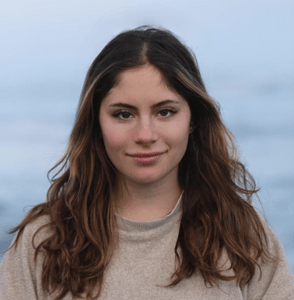 “We are the biggest medical school in the country, and the student population should play a big part in health care innovation,” Stephanian said.
“We are the biggest medical school in the country, and the student population should play a big part in health care innovation,” Stephanian said.
In addition to their own entrepreneurial endeavors, the duo has worked with Boomerang Ventures in Indianapolis on due diligence in the connected health care space — areas like digital health-based therapeutics and virtual reality in pain management.
“I am impressed with how Brooke and Sabin create a peer community of entrepreneurs as they work on their startups,” said Julie Heath, the inaugural director of IU Innovates, launched in 2023 to expand support for students and faculty in growing their startup ventures. “No startup team works in a vacuum. It takes a network of support.”
Stephanian participated in a founders’ group for IU graduate students that Heath piloted along with an IU Kelley School of Business faculty member.
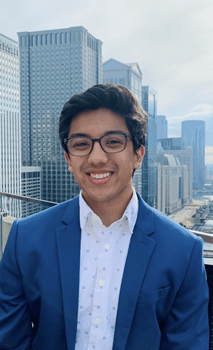 “Brooke and Sabin have helped me think through what more we can do to support students in their entrepreneurial journey,” Heath said. “I believe their story will inspire others and help us create the conditions to support more IU entrepreneurs.”
“Brooke and Sabin have helped me think through what more we can do to support students in their entrepreneurial journey,” Heath said. “I believe their story will inspire others and help us create the conditions to support more IU entrepreneurs.”
Innovation requires creative vision, practical know-how and plenty of grit. Most ideas never make it to market — and that’s OK. Karki and Stephanian said they have learned from every so-called “failure.”
They’ve also experienced some big successes. That’s what keeps them pushing forward on other innovations currently in the works.
“It’s those rare moments when what you envision and want to design collides with what is needed, and you find a sustainable model for delivering it,” Karki said. “That’s when the magic happens.”
